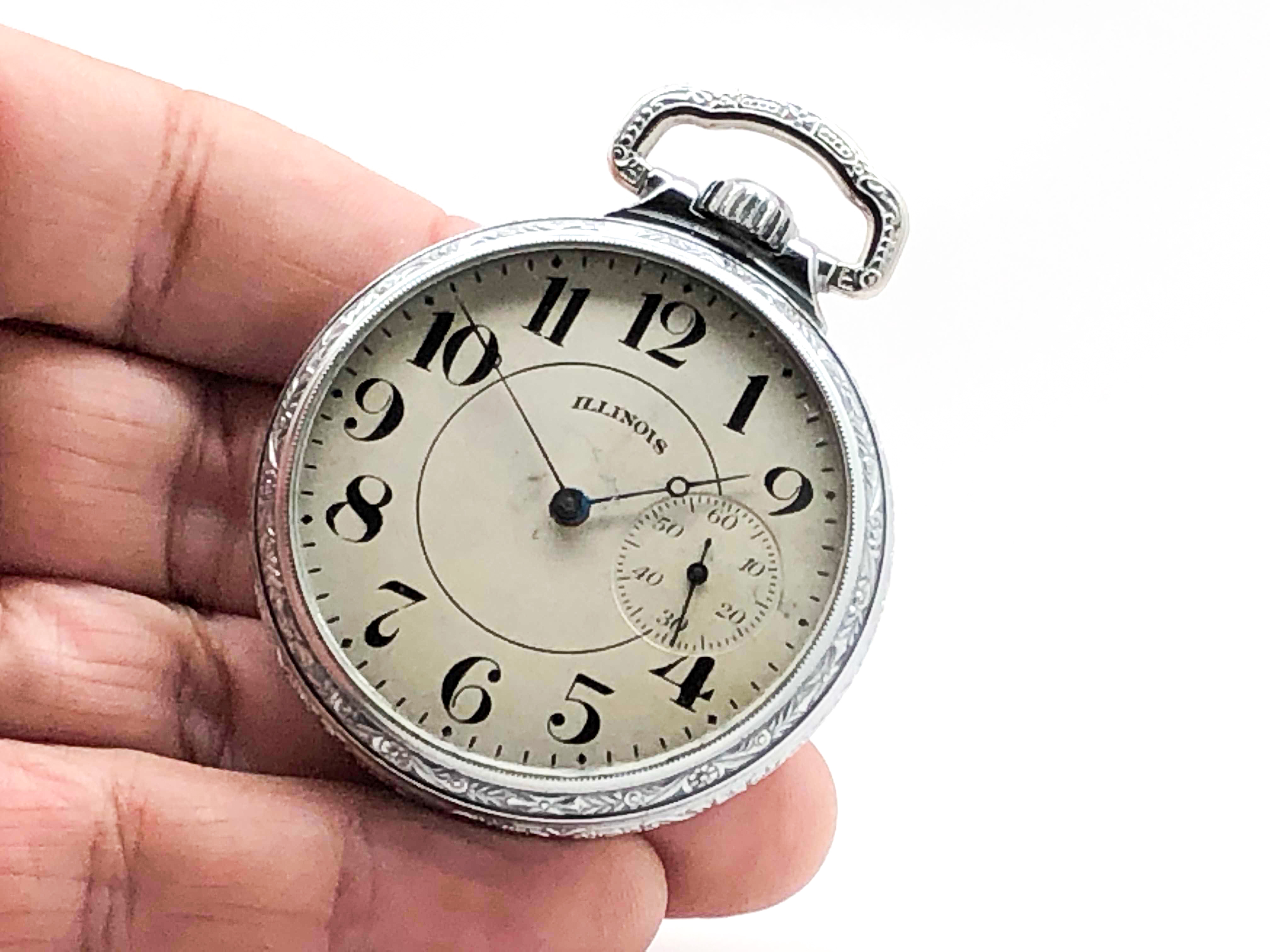



Pocket watches were carried by aristocrats, noblemen, wealthy businessmen, traders, captains, and of course railroad engineers - who needed to carry a well-made pocket watch that would keep almost perfect time, in order to adhere to their rigid train & track schedules. The more jewels on a pocket watch, the less grinding of metal-on-metal within its gears, thus also resulting in the pocket watch keeping better time.īefore wristwatches became popular after World War I, and prior to the development of the trench watch (which was a transitional design for a timepiece used on the battlefield), the pocket watch was the most common method of keeping time. The number of jewels on a pocket watch dictated its movement and thus its lifespan and value. The high-end vintage pocket watch was often crafted from gold or silver, with gold or stainless steel gears, while more affordable pocket watches were crafted from brass or nickel, with a thin layer of gold or silver on the outer case. The early pocket watch was crafted from a variety of metals, including nickel, brass, silver and gold. While pocket watches ( or pocketwatches) did not reach the height of their popularity until the mid to late 19th Century, pocket watches have been around since the mid-1400’s and crafted regularly by master watch makers in Europe in the 1500’s. Let time take its course - browse a vast selection of antique and vintage pocket watches available on 1stDibs designed by legendary brands such as IWC, Cartier and more.Origins of the Pocket Watch (Pocketwatch)

But given their vintage charm and our general appetite for good design, pocket watches are a piece of statement-making jewelry and today can prove complementary to your formal attire in a manner that is stylish and unconventional. Suddenly, if you wanted to know the time, you merely glanced at your wrist. This was a boon to the watchmaking industry, with companies like Elgin National Watch Company and the Waltham Watch Company producing high-grade and workingman’s watches.īy the 1930s, wristwatches comprised the bulk of watch manufacturing in America, superseding the pocket watch. It was a requirement for railway workers to wear a pocket watch, as the timepieces were responsible for keeping conductors on schedule. In the late 1800s, the open-face pocket watch became a staple on the American railroad. For example, the Marius Lecoultre pocket watch - made circa 1890 - does everything but uncork your wine. For collectors, pocket watches are big, and that means a larger canvas provided for functions without crowding the dial. (Today, they’re among the most sought after by collectors and enthusiasts.)Īt the onset, pocket watches resembled small round table clocks, and pulling your small round table clock - perhaps of the silver variety - out of your breast pocket in front of someone else demonstrated unequivocally that you cared about punctuality. Artfully crafted pocket watches were a symbol of wealth, and manufacturers such as Vacheron Constantin and Patek Philippe became known for theirs. The earliest pocket watches were luxury items, and, owing to cost, they weren’t commonplace until the 19th century. With a suit and a waistcoat, a pocket watch can be a refreshing alternative to a wristwatch. Can you pull off a vintage pocket watch? Of course you can.


 0 kommentar(er)
0 kommentar(er)
